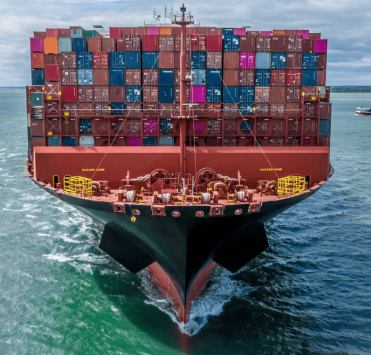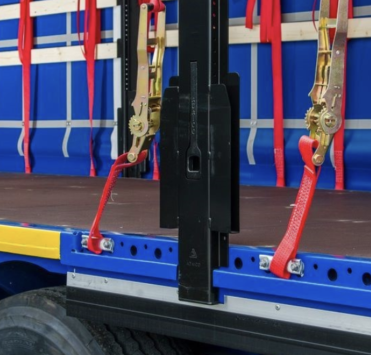Incoterms 2020

The purchase and sale of goods between countries are strictly subject to certain regulations that clearly govern the actions of the participants in transactions. Without regulation, it is impossible to imagine an orderly system of interaction between suppliers and buyers. Incoterms 2020 is a unique set of rules essential for international trade. These 11 terms are the cornerstone of cross-border agreements. They clarify the responsibilities of the seller and the buyer.

What are Incoterms 2020?
Paradoxically, the more freedom Incoterms 2020 provides, the fewer risks for the parties. Clear formulations of the rules are a reliable shield against contradictions and misunderstandings. They allow for impeccable logistics and help avoid unnecessary costs.
Incoterms 2020 are like road signs in the world of international transportation. They point the right way and warn of dangers. By following these rules, you can confidently navigate the waves of global trade.
Surprisingly, only 11 terms can accommodate the specifics of different modes of transportation. Whether shipping goods by sea or express delivery by air, the rules developed by the International Chamber of Commerce are applicable everywhere. They are like a universal key that opens the door to efficient logistics.
Let's delve into the concepts step by step to define the norms, types, and conditions of Incoterms. We will study a hint in the form of a table—a reliable assistant in the practical application of the necessary terms.
- This information is valuable for market participants involved in foreign economic activity. It will help optimize processes and minimize risks. The presented set of rules is a reliable compass for regulating agreements. With it, you will always be on the right course to success in cross-border transactions.
- The prescribed norms are not just a set of rules but a true constitution of trade between countries. These are clearly defined responsibilities of the seller and the buyer, laid out with precision.
- The Incoterms 2020 codes are like road markings: they do not restrict movement but direct it into a safe channel.
- The terms used in the norms are concepts that help determine risks and obligations. They are distributed between the seller and the buyer with mathematical precision. These are formulas for successful deals.
- Incoterms 2020 is the language of global trade. It is understandable to all participants in foreign economic activity, regardless of the country or continent. It is a kind of Esperanto of world logistics, a universal code for efficient transportation.
It is important to remember that Incoterms 2020 can only be applied to international agreements. They do not work within a country, just as international law does not interfere in the internal affairs of states. Incoterms 2020 is the premier league of rules, applicable exclusively to cross-border agreements.
Incoterms 2020 in Ukraine is not just a set of rules but a philosophy of international trade. They emphasize, define boundaries, and show the way. Incoterms 2020 is a compass leading to success in global commercial relations.
Purpose
The purpose of the set of rules is paradoxically multifaceted. These definitions are ready for any challenges in international trade.
At first glance, Incoterms 2020 aims to simplify life for foreign economic activity participants. But in reality, they add a pleasant degree of healthy complexity. After all, following clear rules requires discipline and attention to detail, qualities essential for success in cross-border agreements.
Incoterms 2020 is not just a set of rules but a code of honor in international trade. They set high standards for conducting business and encourage deal participants to act responsibly and professionally.
Paradoxically, Incoterms 2020, being universal rules, take into account the specifics of each individual agreement. They are like a well-tailored suit that fits perfectly thanks to an individual cut.
The purpose of the norms is to distribute risks and costs and create an atmosphere of trust between the deal participants.
Incoterms 2020 is like a bridge connecting continents and cultures. They help overcome barriers arising from differences in legislation and business practices of different countries.
The set norm is to make international trade more efficient, predictable, and safe. Incoterms rules are a reliable foundation on which global economic cooperation is built.
Types of Supplies According to Incoterms 2020
The types listed are a palette of logistical solutions, each with its unique shade. Let's consider these terms through the lens of paradox.
EXW (Ex Works) — Factory Delivery
This term places full power in the hands of the buyer. The supplier only waits for their goods to be picked up from the warehouse.
FCA (Free Carrier)
This term is like a relay baton in the world of logistics. Under FCA Incoterms 2020, the supplier delivers the product to the specified point, and the buyer takes over, handling further transportation. This term represents an ideal balance of obligations, where each participant contributes to the overall success.
CPT Incoterms 2020 (Carriage Paid To)
Imagine ordering goods from abroad under the CPT (Carriage Paid To) delivery conditions. It's like the seller acts as your personal courier. They not only pack and ship the goods but also pay for their journey to your specified destination. However, there's a catch—as soon as the goods are handed over to the first carrier, all risks transfer to you, even though the seller pays for the delivery. Thus, CPT is like entrusting your package to a reliable friend who promises to pay for its journey but cannot guarantee that nothing will happen to it on the way. The risks transfer to you before you receive your long-awaited goods.
CIP Incoterms 2020 (Carriage and Insurance Paid To)
It's like first-class service for your cargo in international transportation. The seller organizes and pays for the delivery and insures your goods against possible mishaps on the way.
FOB Incoterms 2020 (Free On Board)
The seller is considered to have fulfilled their obligations once the goods are loaded onto the vessel at the specified port in the agreement. From this moment, all existing risks fully transfer to the buyer.
FAS Incoterms (Free Alongside Ship)
The seller delivers the goods to the side of the ship at the port of shipment, and the buyer pays for loading and freight.
DAP (Delivered at Place)
This is a "chameleon" term that adapts to any circumstances. According to Incoterms DAP, the seller delivers the goods to the agreed location, and the buyer takes over, handling import customs clearance. This term is like jazz improvisation, where each participant adds their unique note.
DPU Incoterms 2020 (Delivered at Place Unloaded)
This concept is a transformer that can take various forms depending on the circumstances. The supplier delivers and unloads the goods at the agreed place. This term is adaptable—it can be simple or complex but always leads to the desired result.
DDP Incoterms 2020 (Delivered Duty Paid)
Here, the seller takes on all obligations and costs, including import customs duties. This term is like an ultramarathon in the logistics world—it requires the seller to have endurance, resources, and readiness to go the entire distance. DDP to the buyer's warehouse means maximum obligations for the seller and minimal ones for the buyer.
Note that the DDU (Delivered Duty Unpaid) term was excluded in the 2010 and 2020 editions. Instead, the terms DAT and DAP were introduced to replace the delivery conditions.
Convenient Hint Table
How to use the Incoterms 2020 table? It's very simple! This table is your reliable assistant. It will help you quickly navigate who is responsible for what in transporting goods between the parties to the agreement.
DOWNLOAD INCOTERMS 2020 TABLE IN PDF ⇓
Imagine you are a buyer wanting to order products from another country. You open the table and see definitions like FCA, EXW Incoterms 2020, CPT, etc. Each of them is a kind of "recipe" for distributing responsibilities between the parties to the agreement.
For example, let's take the term EXW (Ex Works). If you choose this term, the seller simply provides the goods at their warehouse. The rest—packaging, loading, transportation, insurance, customs clearance—is your concern as the buyer.
But if you choose the term CIP, most of the hassle falls on the seller. They will not only ship the products to the specified location but also pay for transportation and insurance. You only need to clear customs and receive the goods at the specified place.
To use the table correctly, find the appropriate term. Then see what obligations it entails for the seller and the buyer. Pay attention to the "Application Features" column, which lists important nuances to consider.
Choose the term FCA. The table indicates that under this term, the seller delivers the goods to the specified place and hands them over to the carrier. All costs and risks from that moment on transfer to the buyer. The "Application Features" column notes that the contract should specify the place of delivery as precisely as possible.
Changes in 2020 Compared to the 2010 Rules
Changes in Incoterms 2020 compared to Incoterms 2010 can be likened to software updates—at first glance, everything seems the same, but under the hood, significant improvements make the system more efficient and adapted to the realities of modern international trade.
One of the key changes is replacing the term DAT with DPU. Paradoxically, changing one word can fundamentally alter the term's essence. Now the delivery location is not limited to a terminal but can be any point agreed upon by the parties. This innovation adds flexibility to logistics processes and expands opportunities for optimizing supply chains.
Another important change affected the term FCA (Free Carrier). Incoterms 2020 introduced an option allowing the buyer to instruct the carrier to issue a "on-board" bill of lading. Paradoxically, this innovation, which seems to complicate the process, actually simplifies life for the buyer, giving them more control over the documentation flow.
Incoterms 2020 also clarified the distribution of transportation costs. It is now explicitly stated that the seller and buyer bear their own costs for transport contracts made by each of them. This change, which may seem obvious at first glance, eliminates potential disputes and increases transaction transparency.
Additionally, Incoterms 2020 strengthened insurance requirements for the terms CIP (Carriage and Insurance Paid To) and CIF (Cost, Insurance and Freight). CIF delivery terms: the seller pays for transportation and insurance to the destination port, and the buyer accepts the goods at that port and pays the import duties. Now the minimum insurance coverage must comply with the Institute Cargo Clauses (A) of the Institute of London Underwriters or similar clauses. Paradoxically, stricter insurance requirements actually increase the security and stability of international transactions.
Finally, Incoterms 2020 adapted the terms to the realities of the digital age. The use of electronic documents and procedures is now explicitly permitted if the parties agree or if it is standard practice. This change, which at first glance merely reflects technological progress, has far-reaching implications, paving the way for the complete digitalization of international trade.
Changes in Incoterms 2020 compared to Incoterms 2010, despite the seeming insignificance of some, collectively represent a significant step forward. They make the rules clearer, more flexible, and better adapted to the challenges of the modern global economy. Paradoxically, the evolution of Incoterms is both a move forward and a return to basics, the primary goal of these rules—to serve as a reliable foundation for the development of international trade.









